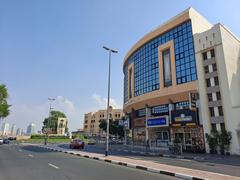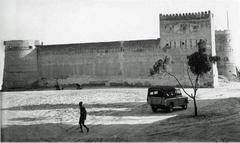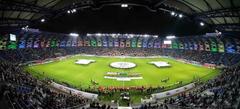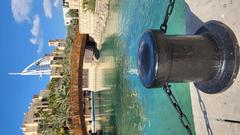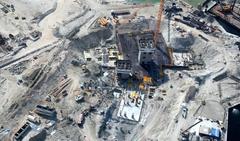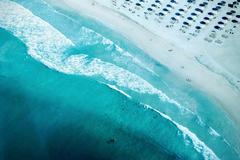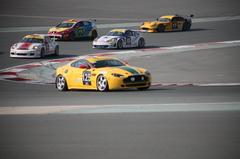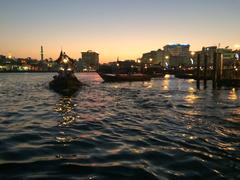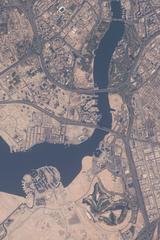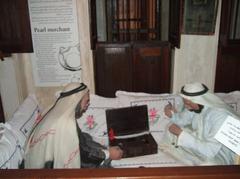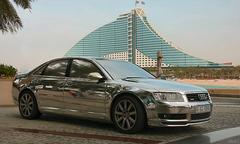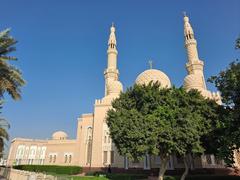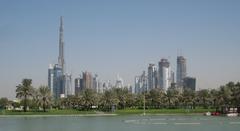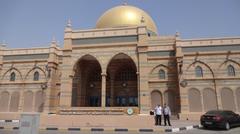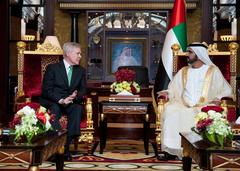HHHR Tower Dubai: Visiting Hours, Tickets, and Historical Significance Guide
Date: 14/06/2025
Introduction
Rising 317 meters over Sheikh Zayed Road, Dubai’s HHHR Tower—commonly known as the Blue Tower—is a striking symbol of the city’s rapid urban transformation and architectural ambition. Completed in 2010, the 72-floor residential skyscraper is a prominent feature in Dubai’s skyline, embodying the emirate’s vision for vertical living and sustainable design (Sparks Journal; HiDubai). This guide explores the history, significance, practical visiting details, and the vibrant context surrounding HHHR Tower, ensuring visitors can fully appreciate its architectural and cultural importance.
Table of Contents
- Introduction
- History and Cultural Context
- Architectural Features and Significance
- Visiting HHHR Tower: Practical Information
- Accessibility and Visitor Services
- Nearby Attractions and Recommendations
- Cultural Etiquette and Travel Tips
- Frequently Asked Questions (FAQs)
- Summary and How to Stay Updated
- References
History and Cultural Context
Dubai’s Architectural Evolution
Dubai’s journey from a modest trading port to a global metropolis is manifest in its innovative skyline. The late 20th and early 21st centuries saw an unprecedented boom in supertall skyscraper construction, reflecting Dubai’s aspirations and capacity for large-scale, innovative development (Sparks Journal). The HHHR Tower, a product of this era, represents the city’s commitment to integrating modern technology with cultural motifs (HiDubai).
Naming and Development
Named for the initials of its developer, HHHR Tower is often referred to as the Blue Tower due to its striking blue-tinted façade (Wikipedia). The project was realized by a partnership between Al Ahmadiah Contracting (UAE) and Hip Hing Construction (Hong Kong), bringing together local and international expertise (Touristlink).
Architectural Features and Significance
Design and Engineering
HHHR Tower stands at 317 meters, with 72 floors housing 454 residential units and commercial spaces (Skyscraper Center). Designed by architect Al Hashemi, its all-concrete structure offers durability and fire resistance—crucial in Dubai’s climate. The blue glass curtain wall not only enhances the tower’s visual impact but also improves energy efficiency by limiting solar heat gain (CBM Engineers).
Ranking and Influence
Upon completion, HHHR Tower was the world’s second-tallest residential building, only surpassed by Australia’s Q1 Tower. It remains among the top 20 tallest residential skyscrapers globally and ranks as Dubai’s sixth tallest (World Atlas). Its successful integration of residential and commercial spaces set new benchmarks for luxury high-rise living in the city.
Urban Context
Located at 38 Sheikh Zayed Road, the tower is a key part of Dubai’s central business district, surrounded by landmarks like the Museum of the Future, Emirates Towers, Burj Khalifa, and Dubai Mall (Trek Zone; Citysearch). It enhances the vibrancy and density of the Trade Centre area, reinforcing Dubai’s status as a leading global city.
Visiting HHHR Tower: Practical Information
Visiting Hours and Entry
HHHR Tower does not operate as a conventional tourist attraction. There is no public observation deck, and general access is limited to residents, tenants, and guests of ground-floor commercial outlets. Visitors can admire the tower’s architecture from public areas at any time, especially during sunset and nighttime when its façade is illuminated (Citysearch).
- No official visiting hours for tourists
- No entrance fee for viewing from public spaces
- No guided tours offered inside the building
How to Get There
- Metro: Dubai Metro Red Line, nearest stations: World Trade Centre and Emirates Towers (Visit Dubai).
- Taxi: Widely available; short rides from Downtown or DIFC.
- Parking: Available in adjacent buildings and hotels; limited during peak hours (Dubaifacile).
Accessibility and Visitor Services
Facilities
- Step-free entrances and ramps
- Accessible elevators with Braille and audio cues
- Accessible restrooms and designated parking
- 24-hour security and concierge
- High-speed elevators and central air conditioning
HHHR Tower and nearby infrastructure are designed for inclusivity, ensuring comfortable access for all visitors (Visit Dubai; Lonely Planet).
Amenities
- Ground-floor retail and dining
- Nearby hotels: Crowne Plaza, Towers Rotana (Dubaifacile)
- Easy access to parks: Zabeel Park, Dubai Garden Glow
- Proximity to shopping: Dubai Mall, Mall of the Emirates
Nearby Attractions and Recommendations
Top Attractions
- Burj Khalifa: The world’s tallest building, with observation decks offering panoramic city and desert views (Full Suitcase).
- Dubai Mall: Largest shopping and entertainment center, home to Dubai Aquarium and Ice Rink.
- Museum of the Future: Celebrates innovation and technology.
- Dubai Frame: Architectural landmark with views of old and new Dubai (The Broke Backpacker).
- Al Fahidi Historical Neighborhood: Preserved Emirati architecture and cultural museums (UAEPedia).
- Dubai Opera: Premier performing arts venue.
Parks and Recreation
- Zabeel Park: Urban green space ideal for families and outdoor activities.
- Dubai Garden Glow: Illuminated art installations within Zabeel Park.
Dining and Shopping
- Souk Al Bahar: Boutique shopping and dining with views of the Dubai Fountain.
- Nearby restaurants: Range from casual cafés to fine dining in adjacent hotels and malls.
Cultural Etiquette and Travel Tips
Dress Code
Modest dress is expected in public spaces. Swimwear is restricted to pools and beaches. Carry a scarf for mosque visits (Dubai Travel Blog; Visit Dubai).
General Tips
- Use public transport to avoid traffic and parking issues
- Book tickets to major attractions like Burj Khalifa in advance
- Plan outdoor visits for early morning or evening due to heat (Dubaitravelplanner)
- ATMs and credit cards widely accepted
- Emergency numbers: Police 999, Ambulance 998, Fire 997
Accessibility
Dubai is highly accessible, with ramps, elevators, and inclusive facilities in most modern buildings and public transport (Lonely Planet).
Frequently Asked Questions (FAQs)
Q: Can tourists enter HHHR Tower?
A: It is primarily residential and commercial; access is limited to residents, tenants, and guests of ground-floor businesses.
Q: Are there guided tours or observation decks?
A: No. The tower does not offer public tours or observation decks, but city tours may highlight its architecture.
Q: What are the visiting hours?
A: There are no official hours for tourists. The tower can be admired from outside at any time.
Q: Is HHHR Tower accessible for people with disabilities?
A: Yes. The building and surrounding area include accessible facilities.
Q: What are recommended nearby attractions?
A: Burj Khalifa, Dubai Mall, Museum of the Future, Al Fahidi Historical Neighborhood, and Zabeel Park.
Summary and How to Stay Updated
HHHR Tower stands as a testament to Dubai’s rapid growth and architectural ambition. While it is not a traditional tourist site with ticketed entry or public tours, its central location on Sheikh Zayed Road and proximity to major attractions make it an essential stop for architecture lovers and city explorers (World Atlas; Touristlink).
Visitors benefit from seamless access via metro, excellent nearby amenities, and a rich mix of modern and cultural experiences. For current updates, insider tips, and exclusive tours, download the Audiala app or follow Dubai’s official tourism channels (Dubai Tourism Official Site).
References
- Sparks Journal
- HiDubai
- Wikipedia
- Touristlink
- Skyscraper Center
- CBM Engineers
- Trek Zone
- World Atlas
- Citysearch
- Dubaifacile
- Visit Dubai
- Dubai Travel Blog
- Full Suitcase
- Headout
- Index Exhibition
- The Broke Backpacker
- UAEPedia
- Dubaitravelplanner
- Dubai Tourism Official Site
